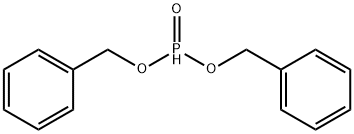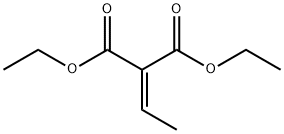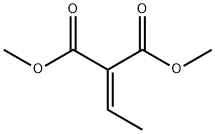HYPOTAURINE
Synonym(s):2-Aminoethanesulfinic acid
- CAS NO.:300-84-5
- Empirical Formula: C2H7NO2S
- Molecular Weight: 109.15
- MDL number: MFCD00038197
- EINECS: 200-258-5
- SAFETY DATA SHEET (SDS)
- Update Date: 2025-12-23 21:30:31

What is HYPOTAURINE?
The Uses of HYPOTAURINE
Hypotaurine is a metabolite of taurine and affects the regulation of the inflammatory aspects of the immune response. It is also converted into taurine in the body.
The Uses of HYPOTAURINE
Hypotaurine has been used as a supplement in fertilization medium (Fert- tyrode albumin lactate pyruvate (TALP)), which used in in-vitro fertilization and evaluation of embryo development. It is also used as a H2S scavenger.
What are the applications of Application
Hypotaurine is an endogenous inhibitory signaling amino acid
Definition
ChEBI: Hypotaurine is an aminosulfinic acid comprising ethylamine having the sulfo group at the 2-position. It has a role as a metabolite, a human metabolite and a mouse metabolite. It is a conjugate acid of a hypotaurine(1-). It is a tautomer of a hypotaurine zwitterion.
Biological Activity
Endogenous inhibitory amino acid.
Biochem/physiol Actions
Hypotaurine, a cystamine analog, is the precursor for taurine synthesis. It can act as an antioxidant and singlet oxygen scavenger, thereby protecting cells from oxidative damage. Hypotaurine is reported to play an important role in the maintenance and stimulation of sperm motility and also in vitro fertilization and embryo development.
Storage
Desiccate at RT
Properties of HYPOTAURINE
| Melting point: | 175-177 °C |
| Boiling point: | 354.9±44.0 °C(Predicted) |
| Density | 1.511±0.06 g/cm3(Predicted) |
| storage temp. | Desiccate at RT |
| solubility | H2O: 100 mg/mL |
| pka | 2.54±0.10(Predicted) |
| form | Solid |
| color | white |
| Water Solubility | Soluble to 100 mM in water |
| CAS DataBase Reference | 300-84-5(CAS DataBase Reference) |
| EPA Substance Registry System | Hypotaurine (300-84-5) |
Safety information for HYPOTAURINE
| Signal word | Warning |
| Pictogram(s) |
 Exclamation Mark Irritant GHS07 |
| GHS Hazard Statements |
H315:Skin corrosion/irritation H319:Serious eye damage/eye irritation H335:Specific target organ toxicity, single exposure;Respiratory tract irritation |
| Precautionary Statement Codes |
P261:Avoid breathing dust/fume/gas/mist/vapours/spray. P264:Wash hands thoroughly after handling. P264:Wash skin thouroughly after handling. P271:Use only outdoors or in a well-ventilated area. P280:Wear protective gloves/protective clothing/eye protection/face protection. P302+P352:IF ON SKIN: wash with plenty of soap and water. P305+P351+P338:IF IN EYES: Rinse cautiously with water for several minutes. Remove contact lenses, if present and easy to do. Continuerinsing. |
Computed Descriptors for HYPOTAURINE
New Products
Indole Methyl Resin tert-butyl 9-methoxy-3-azaspiro[5.5]undecane-3-carboxylate Boc-His(Boc)-OH 2-CTC Resin 4-Chloro-7-tosy1-7Hpyrrolo[2,3-d]pyrimidine 5,7-Dibromo-1H-indole 2,5-dichloro-N-hydroxy-4,6-dimethylpyridine-3-carboximidamide 2,2-Dimethoxy-7-azaspiro[3.5]nonane hydrochloride 4-chloromethyl-5-methyl-1,3-dioxol-2-one (DMDO-Cl) R-2-BENZYLOXY PROPIONIC ACID 1,1’-CARBONYLDIIMIDAZOLE 1,1’-CARBONYLDI (1,2-4 TRIAZOLE) N-METHYL INDAZOLE-3-CARBOXYLIC ACID 4-((2-hydroxyethyl)thio)benzoic acid 1-(TERT-BUTOXYCARBONYL)-2-PYRROLIDINONE Methyl 6-methylnicotinate 3-Pyridineacrylic acid tert-Butyl carbazate TETRAHYDRO-2H-PYRAN-3-OL 2-((4-morpholinophenylamino) (methylthio) methylene) malononitrile 3-(4-morpholinophenylamino)-5-amino-1H-pyrazole-4-carbonitrile 2,4-dihydroxybenzaldehyde 1,3-Diethyl-1,3-Diphenylurea Methyl 2-methylquinoline-6-carboxylateRelated products of tetrahydrofuran








You may like
-
 Hypotaurine CAS 300-84-5View Details
Hypotaurine CAS 300-84-5View Details
300-84-5 -
 Pyridine 99.5% HPLC /UV SpectroscopyView Details
Pyridine 99.5% HPLC /UV SpectroscopyView Details
110-86-1 -
 Guanine , 99%View Details
Guanine , 99%View Details
73-40-5 -
 Piperazine Spot supply, best priceView Details
Piperazine Spot supply, best priceView Details
110-85-0 -
 Dibutyl PhthalateView Details
Dibutyl PhthalateView Details
84-74-2 -
 Imidazole Spot supply, competitive priceView Details
Imidazole Spot supply, competitive priceView Details
288-32-4 -
 Octadecyl 3-(3,5-di-tert-butyl-4-hydroxyphenyl)propionate 98% (GC)View Details
Octadecyl 3-(3,5-di-tert-butyl-4-hydroxyphenyl)propionate 98% (GC)View Details
2082-79-3 -
 Thiourea 99% ARView Details
Thiourea 99% ARView Details
62-56-6
